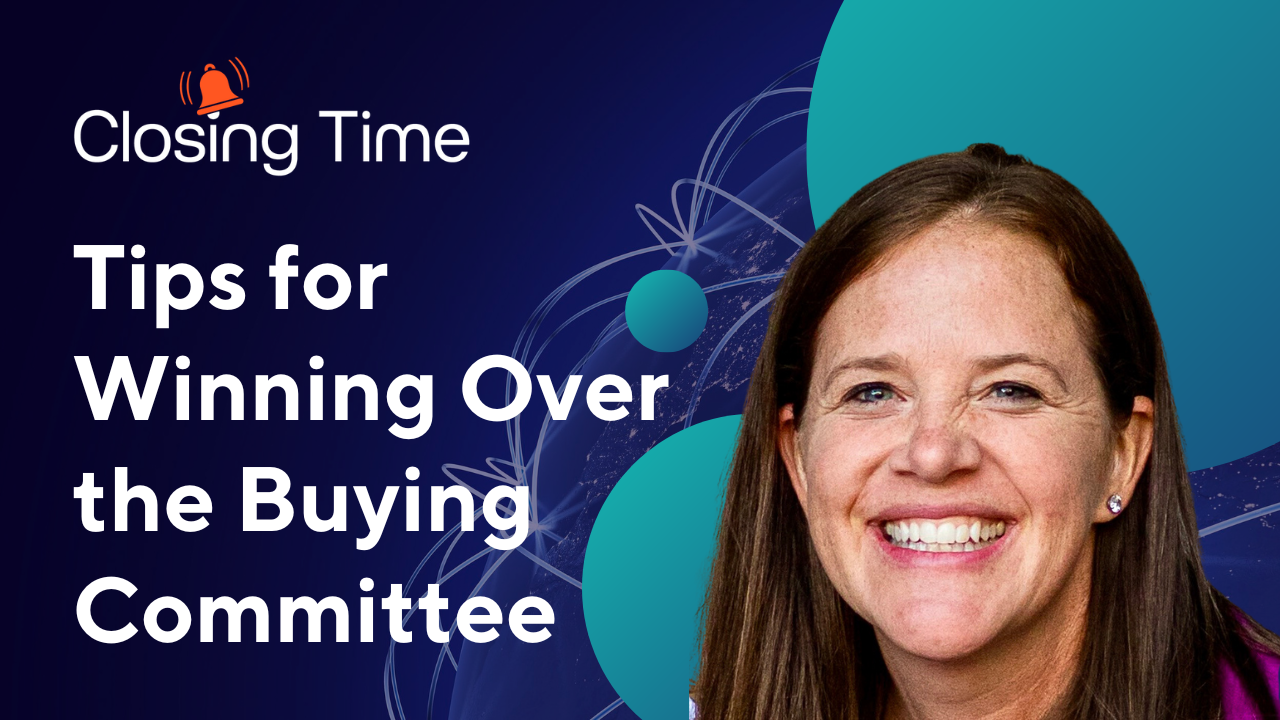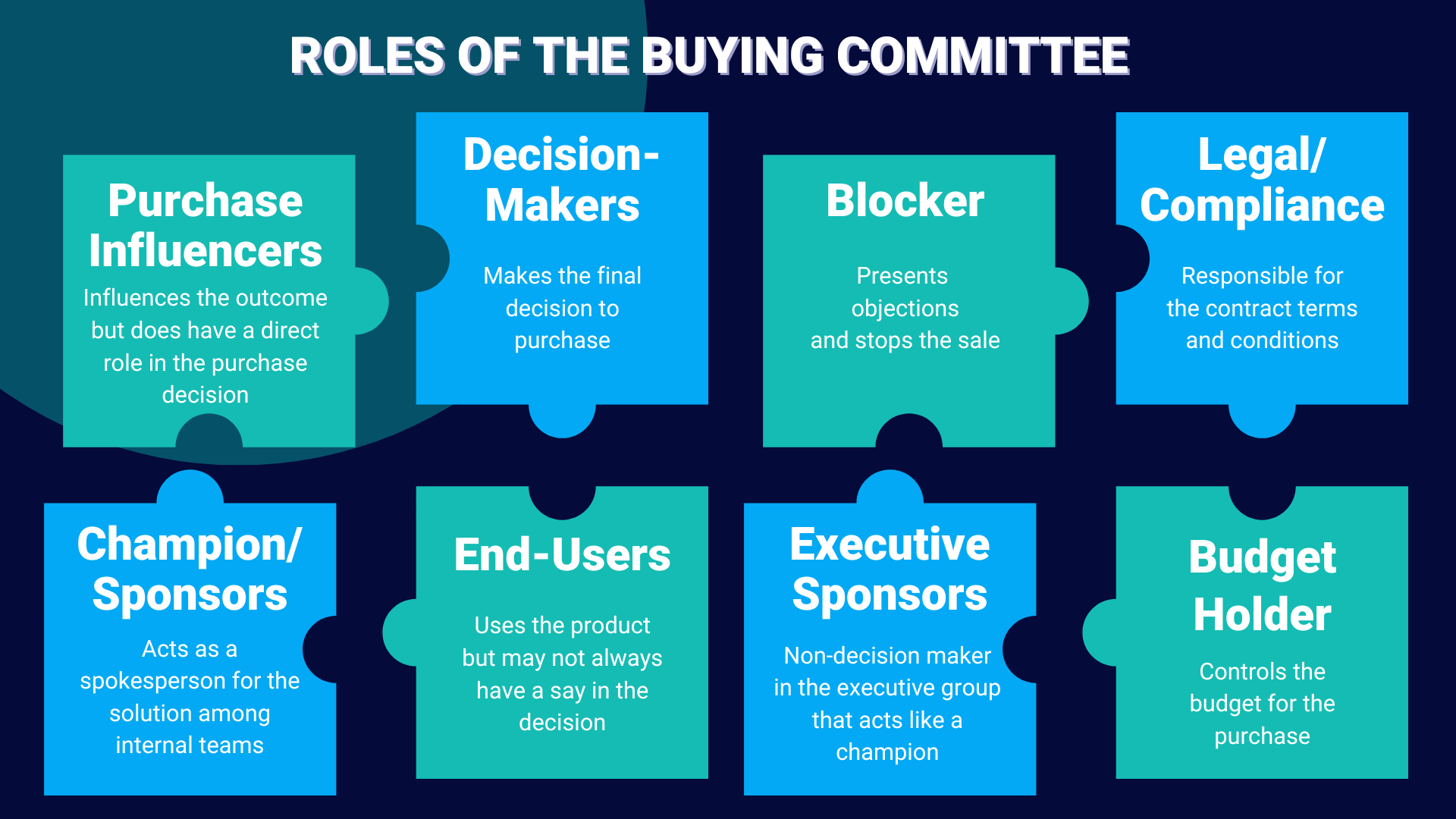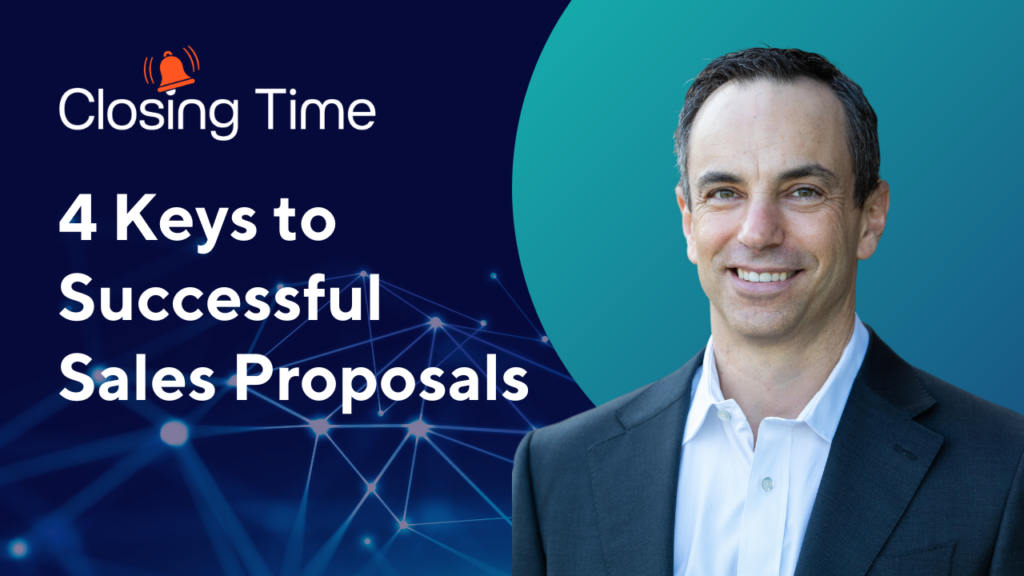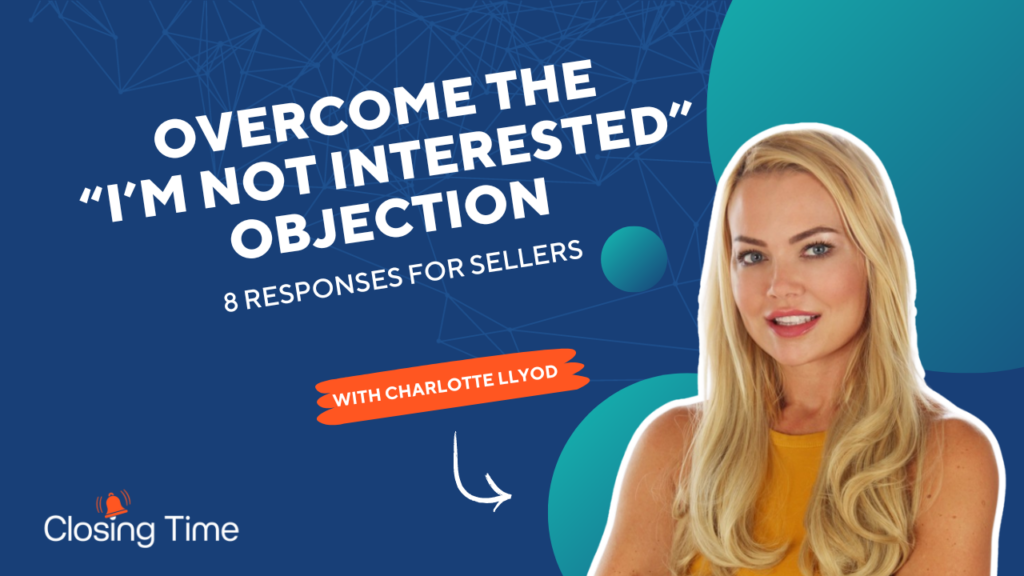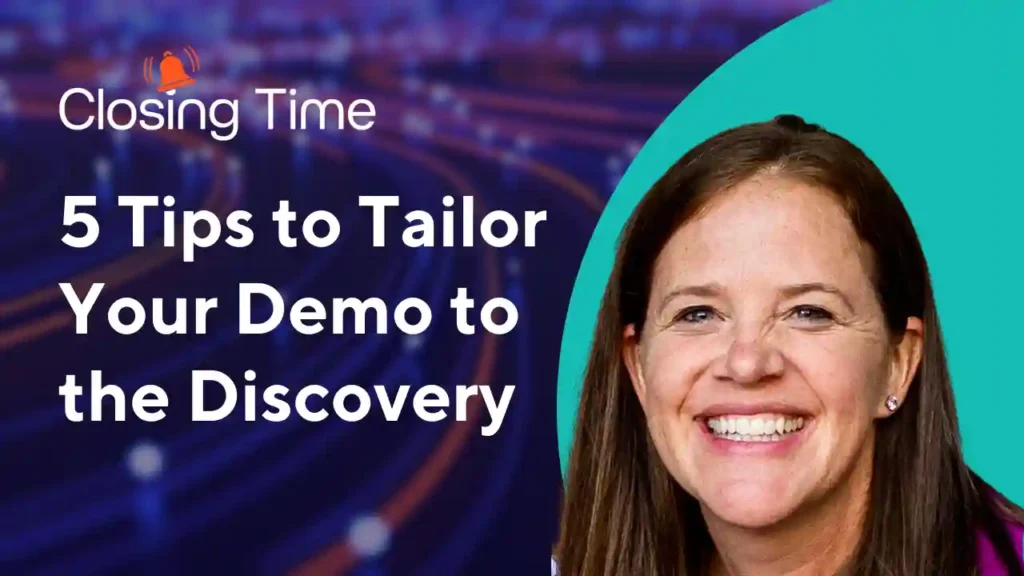When you’re a sports coach, you draw up a new game plan every week based on who you’re playing. Let’s apply that same strategy to sales in this episode of Closing Time. Thanks for tuning into Closing Time, the show for Go to Market Leaders. I’m Dave. Osborne, chief sales officer at Insightly, and I’m joined by Kim Cram, a sales consultant and coach. Welcome to the show, Kim. Thanks for having me, Dave. Now, Kim, I know you love a good sports analogy like the rest of us, so would love to discuss your experience in playing for coaches that switch things up and those who don’t. Yeah. I’ve played for a lot of coaches in my career, but two of them are those that are just complete opposite. There was one that literally didn’t matter who we played, we had the same game plan.. We had the same offense. We played man to man defense. It was one of the most frustrating years of my life and we didn’t win nearly as many games that we should have because of the talent we had. And so it was just a frustrating year. On the flip side, we had this coach that was, everything was dialed in. Every opponent that we played, we knew exactly every player, what their strengths and weaknesses were, what the team did, and we would go and execute. And we won a lot of games that we shouldn’t have. And it was just because we executed better than they did, because we just, we exploited their weaknesses. We took away their strengths and we just, we’d win games. I love that. Now, if we think about how that translates to the business world, I think something that we’re seeing a lot of is buying committees continue to change and evolve. So, I mean, not so long ago, you may see in a typical SaaS evaluation 2 to 3 stakeholders that would need to be involved. But Gartner is saying that these days we’re seeing 6 to 10 decision makers involved in SaaS deals. Obviously, CFOs are becoming more involved than ever in evaluating some of these solutions. So love to hear a little bit about how you can see that translating into these purchasing decisions. Yeah, it goes from kind of all the different stages. You’re prospecting or you are in the sales process, but understanding who they are and what matters to them is really important. Again, you go back to like kind of the game plan of, Hey,. I know these individual players, like I was a point guard and the person. I’m guarding has different strengths than the post player and being able to again, look at those and what matters to them and how they operate and how they think. So thinking about each individual role as you’re trying to get them to say yes to a meeting all the way through the process of you’re doing a demo and you’re speaking their language to them versus this is how I do it. You know, they’re going to like it or they’re not, and I’m not going to change. No, like you’re going to cater it so that you can be able to optimize and get as much as possible because you’ve done your job and you’ve executed based off of who they are and what matters to them. Right. And as you consider each member of this buying committee, we need to make sure that they to your point, we’re addressing the topics that matter. Right. So there’s probably there’s about four questions that, you know, that I’ve seen that we need to consider. Right. So the first one being who they are. Yeah. When you think about who they are, there’s a lot of things that go into it. But I kind of look at who are they? What’s their role? I mean, you talk about a CFO that’s getting involved. Well, if you have a CFO that’s involved, but actually it’s a marketing person that you’re actually selling to or they’re the user. They’re very different personalities. So thinking about what their role is and how they think and what their personality type is like, so that you can be able to make sure that your messaging is on point. Again, even from a prospecting standpoint or throughout the process, how you follow up and what you show them in a demo or how you go about the close you’re focusing in on how they think and who they are versus again, here’s how I’m going to do it and take it or leave it. I love that. So let’s continue that thought. So let’s say we’re trying to sell a marketing product, right? So there’s obviously marketing stakeholders, but there’s also the CFO involved. So we’ve identified who they are. Second, what matters to them or what are they going to be evaluating in the process? Yeah. Each of them is going to be different about how they think and like what the priorities are. You look at like a CFO and they’re looking more like, Hey well, what’s the ROI on this and is this going to make us more efficient? And, you know, all these kind of bigger picture type things. Where somebody, and maybe it’s just that you talk about marketing or whatever that role is, the user and what actually matters to them. How are they measured? What are the things that they’re trying to accomplish? So thinking about it from a standpoint of, hey, what are the things that they are going to be dealing with it that are frustrating to them and that they’re saying, Hey, these are the things that, I want a promotion and to get a promotion, I got to do my job really well. So here’s what matters to me. So the user and what they’re dealing with is going to be different than, Hey, I’m signing off on this because and they’re looking at it from a whole different a whole different perspective is what they’re going to be looking at it from. 100%. And I think the third point is kind of a continuation of that, right? So the second is what matters to them. Third is, you know, what are the the pain points and problems they’re facing? Right. And not only identifying those, but dragging them across the glass in the process through discovery. To make them really kind of add weight to their pain. No for sure, because that is the thing we’ve talked about of how you’re really going to be focusing in on them. You focus in on their pain points and their problems. And, you know, you’re almost like a therapist, not really, but you’re really focusing in on, hey, what are those pain points and what are those frustrations? And digging into those. Because if it’s just something that’s cool, they’re never going to buy. So you’re focusing in on, what can I solve? But they’re going to be different people are going to think about it differently because a CFO, they’re not necessarily looking at the day to day tasks that somebody in marketing would be doing with your tool or your offering. So you’re really focusing in on, well, what does matter to the CFO? Because they’re going to be the ones that sign off on it. You can’t just focus in on the day to day and not really highlight and focus in on here’s how this is going to matter from a number standpoint and here’s how it’s going to matter from an ROI standpoint. So you’re having to cater your message depending on who’s involved and making sure that you’re addressing all of them, because you may have the buy in from the marketing person because this solves my pain points and problems. And the CFO goes eh it’s not really going to give us the ROI, we have some other priorities and then all of a sudden you’re off the table and you’re like, what just happened? We’ve solved the problems for that marketing person, but you didn’t hit the other and next thing you know you’re off. And it’s even true on the other side. The CFO loves it and they’re like,. This is going to be huge for us. And the marketing person is like,. I don’t know. I feel like I could do it better other ways. You’re like, But I have the person that’s going to sign off because sometimes we think, Oh, if we get the person that’s going to sign off on it, if we can get them bought in, then it doesn’t matter. And it’s actually you got to have every person bought in and it solves their individual problems of what matters to them or you’re not in. Absolutely. Which is actually cascades into that fourth and final point, is we’ve nailed those pain points. We’ve drug them across the glass. But making sure that we define and articulate what is the impact of those pain points. And you can measure value a number of different ways. Right? I think most simply, it’s increasing revenue, decreasing costs, mitigating risk. Right. But I think calculating or helping derive the cost of inaction or the return on investment. Right. And what are the positive business outcomes that are going to come about by moving forward with your particular solution? Yeah, exactly that. And one of the things that I’ve seen is, you know, those moments where you you start to dig into it and they talk about the pain point and their frustration. They’re talking about it and you start to dig in a little bit and you have that aha moment from their end and we’re like, Hey, well, how does this impact if you don’t fix this? How is this going to be? And you have that moment where they pause and go, Huh, Yeah, I hadn’t thought about that. And you like, you know, you’re trying to you want to learn it, but you also want them to understand and think about it. If this is just something that would be like, yeah, that be nice. Yeah, this is frustrating and this would be convenient if you’d help me with it. But it’s not a priority. If that impact isn’t big enough, then cool isn’t going to move the needle. But you start to have that where you start to like dig in with them and they start to like and they start to have these like, yeah, and it would be able we could be able to do this and we could be able to. And they start to have their wheels turn of all the things that they can do and they can accomplish when you’re involved. And then in a sales,. I want to then bring those up. I want to speak their language all throughout the process of, hey, remember how you talked about that this was going to open these doors and it was going to have this impact, and I’m going to remind them every other second that this is about them. This isn’t about me and me just wanting to make a sale. This is about me making a change for you so that you can have these things that are going to have this impact. So it’s be able to kind of balance those things out so that you’re not just, Hey, let me sell you my product. And here it is. Hey, again, focusing in on those individual roles and what matters to them and be able to highlight those so that everybody’s thinking on the same page of this is going to solve it and it’s going to have this kind of impact and we can’t live without it. Absolutely. To hear, That’s really cool or that’s nice. In some ways I don’t want to say it’s the kiss of death, right? But I mean, that should be a flag in some degree, right? Like, we don’t want to necessarily sell a cool solution. We want to sell an impactful solution, you know, one that’s going to move the needle for them. Yeah. So I just it’s one of those kind of buzzwords that if you hear that someone on the other end saying, Wow, that’s really cool. Like, I don’t necessarily take that at face value that you’re hitting the mark. That might be something you need to think about. Yeah. Dig in deeper with it, if they do say,. Hey, that’s cool. Yeah, yeah, we get that all the time. How about for you? Like, what is the impact? So now I want to, like, turn it into and see, is there something beyond that Cool and again, get their wheels turning. It’s not good enough for just me to know. They have to know. So dig into that a little bit and so that it’s not one of those like I just had reps. They loved it.. They thought it was so cool. And I’m like, Oh boy. But like, what are we going to solve and how big is it? And they’re like, They loved it. And like, that’s a no, we got to go back. We got a lot of work ahead of us. So if you do hear that, yes, it could be the kiss of death. But dig into it. We get that all the time. Everybody loves this part.. For you, How is it solving for you and how big is that impact? So digging in a little bit versus just walking away and missing the opportunity. All right, Kim, thanks so much for those insights. Super helpful and relevant for so many different SaaS sellers out there. Thanks again for joining us on Closing. Time. It’s great being here. Thanks, Dave. All right. Remember to like this video, tick the bell to make sure you don’t miss any episodes. We’ll see you next time on Closing Time.

